 Gambling is an incredibly fast paced and near-worldwide industry, constantly developing new products to meet the demands of existing and potential consumers. To give you an idea of how large the industry is and how quickly it grows, it was estimated that online gambling alone would be worth around $93 billion (USD) by 2023… but when 2023 rolled around, the global industry was worth $565 billion. Quite the over achiever.
Gambling is an incredibly fast paced and near-worldwide industry, constantly developing new products to meet the demands of existing and potential consumers. To give you an idea of how large the industry is and how quickly it grows, it was estimated that online gambling alone would be worth around $93 billion (USD) by 2023… but when 2023 rolled around, the global industry was worth $565 billion. Quite the over achiever.
The global casino industry uses the term ‘gross gaming yield’ to measure its revenue. Gross gaming yield can quite simply be defined as the amounts staked by customers, minus the winnings paid out to them.
Online gambling, however, does not necessarily inspire people to travel for a gambling holiday, as they can gamble online from home – assuming they reside in a country where gambling is legal.
There are countless cities in the world which boast glamorous casinos, from Macao’s Grand Lisboa Casino to Las Vegas’ Bellagio, to equally stunning venues like the Monte Carlo Casino in Monaco and Casino Baden-Baden which is nestled away in the heart of Germany’s Black Forest.
The questions which this article seeks to answer are simply a) do people travel to venues such as these specifically to gamble, and b) if they do, why do they do so?
In order to provide an answer to these questions it is first necessary to provide a concise definition of what is regarded as ‘gambling tourism’. It can be defined as follows:
Gambling tourism is a combination of the travel and gaming sectors, covering those players who visit places specifically to gamble as well as the industries which support those players. Casino hotel resorts play a big role in gambling tourism, attracting visitors for a well-rounded and entertaining vacation that includes gambling, entertainment and more. Gambling tourism also covers players who visit another location to gamble because they are restricted from playing in their home nation or state.
Travelling to/within the United States of America
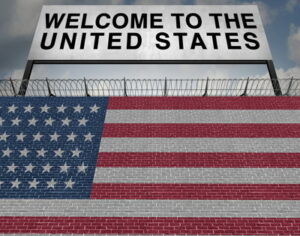 Before getting into why, and to what extent, people travel to (or within) the United States of America to gamble, a bit of context is needed. It is a common misconception that the USA – commonly known as the ‘land of the free’ is a hotbed for luxury casinos where patrons can gamble away to their heart’s content, often benefitting from fabulous benefits along the way such as free food and drink at any casino worth its salt.
Before getting into why, and to what extent, people travel to (or within) the United States of America to gamble, a bit of context is needed. It is a common misconception that the USA – commonly known as the ‘land of the free’ is a hotbed for luxury casinos where patrons can gamble away to their heart’s content, often benefitting from fabulous benefits along the way such as free food and drink at any casino worth its salt.
This is far from the truth in reality. America is a federal republic and because of this – politically speaking – each of the 50 constituent states can decide for themselves if they want to permit gambling (either state-wide or in certain areas within the state), and if they do, exactly which types of gambling they want to permit.
So you may be surprised to learn that when it comes to casino-style gambling, only the states of Nevada and Louisiana permit this form of gambling state-wide. Yes, you read that right: only two states out of 50 permit gambling in a casino anywhere within the state. All other states which permit casino-style gambling (18 in total) heavily restrict it to limited areas within the state.
Another example is that only 28 of the 50 states permit racetrack gambling. Horse racing is one of the largest – if not the largest – forms of sports betting in the world when it comes to revenue, so you could be forgiven for assuming it would be permitted across the entirety of the United States, especially when the country plays host to incredibly prestigious horse racing events such as the Kentucky Derby, the Breeders Cup and the Belmont Stakes.
On top of this, quite interestingly, despite the federal law changes in 2018, still only 25 states in the USA permit online gambling: these are Arizona, Arkansas, California, Colorado, Connecticut, Delaware, Illinois, Indiana, Iowa, Kansas, Louisiana, Maryland, Massachusetts, Nevada, New Hampshire, New Jersey, New York, Ohio, Oregon, Pennsylvania, Rhode Island, Tennessee, Virginia, Washington DC, West Virginia, and Wyoming. Anyone from the other 25 states cannot legally gamble online, and this will only serve to enhance the desire of people to travel to gamble.
The restrictions outlined above are relevant to gambling tourism specifically because they have a direct impact on where in the USA people will travel to when they are coming from outside America and want to include gambling as part of their trip, whether their trip is solely dedicated to gambling or a gambling-related event, or if they just want to be somewhere that they can dip in and out of gambling should they choose to. Similarly, these restrictions also affect the holidaying choices of some people who live within the USA.
When less people have the freedom to gamble local to where they live, as is the case in many states in the USA, they will often need to travel if they wish to gamble – and sometimes this could be a journey amounting to hundreds of miles across several states.
Naturally, if you are having to travel to go to a casino or to a race meeting for example, it essentially becomes a holiday as you will be booking a hotel and looking for things to do and places to see in the area surrounding your destination.
Internal US Tourism Between Gambling Attractions
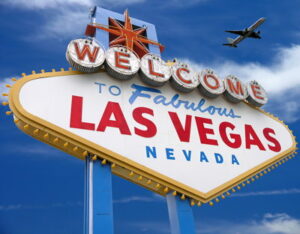 It is therefore very realistic to suggest that keen gamblers from heavily restricted areas in America will seek to make holidays to cities such as Las Vegas and Atlantic City, or broaden their horizons by travelling further afield to the United Kingdom, mainland Europe or parts of Asia where you have more freedom to gamble.
It is therefore very realistic to suggest that keen gamblers from heavily restricted areas in America will seek to make holidays to cities such as Las Vegas and Atlantic City, or broaden their horizons by travelling further afield to the United Kingdom, mainland Europe or parts of Asia where you have more freedom to gamble.
One thing worth noting in America is the transition of Las Vegas in recent times from being an out-and-out gambling destination to a more all-round holiday destination, with more sights to see, entertainment events and top quality restaurants on offer.
Around 20 years ago, gambling accounted for roughly 90% of Las Vegas’ revenues. This is no longer the case, as especially younger tourists tend to visit gambling cities to visit exotic nightclubs, partake in luxury shopping and visit the most elegant places in the city.
Vegas (and similar cities) have adapted to new and ever changing consumer demand, resulting in such cities being more well-rounded holiday destinations as opposed to solely gambling hotspots.
A perfect example of how the source of a casino’s revenue has changed in this time period is Wynn casino in Las Vegas. Wynn casino previously made more than 50% of its profits directly from gambling, but this figure has dropped to 23% as of 2019.
When you compare this with alternative sources of income for the casino, with the casino’s restaurants account for a commanding 38.7% of all income, 26.8% from hotel rooms and 11.5% from other services, it is easy to see that people go to popular casinos in Las Vegas for an all-round hospitality experience, rather than to exclusively gamble.
It remains a concrete fact that when it comes to gambling culture, Las Vegas is perceived by millions upon millions of people across the world as the glamorous home of gambling, and because of this gamblers will still flock to the city for the trip of a lifetime.
Many people travel to Las Vegas to witness the glitz and the glamour of the city, with fabulous and extravagant shows such as Cirque du Soleil and master magician David Copperfield both performing in the city regularly.
This contributes to gambling tourism because a lot of people choose to travel to Las Vegas to indulge themselves in a lavish experience they would not find anywhere else, which gambling is perceived to be a big part of. While people may go on holiday to Las Vegas to see and do many different things, they very regularly incorporate visits to casinos into their holiday.
In addition to this, the recent transition of Las Vegas towards a more well-rounded city (as outlined above) means the city appeals more as a destination to holidaymakers who do not gamble regularly and would not travel exclusively to gamble.
The following table will give you an idea of where Vegas’ patrons travel from:
| Percentage of overall visitors by year | |||||
|---|---|---|---|---|---|
| Visitor origin | 2014 | 2015 | 2016 | 2017 | 2018 |
| United States of America | 81 | 84 | 81 | 84 | 80 |
| Eastern states[1] | 7 | 7 | 7 | 7 | 7 |
| Southern states[2] | 12 | 13 | 15 | 15 | 16 |
| Midwestern states[3] | 9 | 11 | 10 | 9 | 10 |
| Western states[4] | 53 | 53 | 49 | 52 | 47 |
| Southern California | 27 | 25 | 27 | 26 | 19 |
| Northern California | 6 | 4 | 4 | 5 | 4 |
| Arizona | 6 | 9 | 6 | 7 | 10 |
| Other western states | 14 | 15 | 12 | 13 | 16 |
| Foreign | 19 | 16 | 19 | 16 | 20 |
[1] Eastern states = Connecticut, Delaware, District of Columbia, Maine, Maryland, Massachusetts, New Hampshire, New Jersey, New York, Pennsylvania, Rhode Island, Vermont.
[2] Southern states = Alabama, Arkansas, Florida, Georgia, Kentucky, Louisiana, Mississippi, North Carolina, Oklahoma, South Carolina, Tennessee, Texas, Virginia, West Virginia.
[3] Midwestern states = Illinois, Indiana, Iowa, Kansas, Michigan, Minnesota, Missouri, Nebraska, North Dakota, Ohio, South Dakota, Wisconsin.
[4] Western states = Alaska, Arizona, California, Colorado, Hawaii, Idaho, Montana, Nevada (excluding Clark County), New Mexico, Oregon, Utah, Washington, Wyoming.
The table above clearly shows that the majority of tourists to Las Vegas come from within America, especially the western states. To a certain extent this shows a sustainable core revenue base, as the city does not rely too heavily on revenue from foreign visitors.
Taking into account the events of 2020, and the extent to which holidays abroad have been cancelled, it can be argued that a city which brings in most of its revenue from US-based clients will see a sooner resurgence in revenue than a city which relies on holidaymakers from abroad. After all, interstate travel (especially in the midst of a global pandemic) is far easier, cheaper and safer than international travel of any kind.
The following table represents visitors to the city to date in 2020:
| Jan | Feb | Mar | Apr | May | Jun | Jul | Aug | |
|---|---|---|---|---|---|---|---|---|
| Visitors (million) | 3.55 | 3.33 | 1.53 | 0.12 | 0.15 | 1.07 | 1.44 | 1.54 |
| Total occupancy | 85.9% | 86.8% | 39.8% | 1.7% | 2.8% | 40.9% | 42.5% | 42.7& |
| Gaming revenue (millions) | $904.6 | $897.5 | $546.5 | $3.72 | $5.9 | $441.04 | $612.9 | $593.9 |
| Visitor volume vs 2019 | +3.9% | +4.5% | -58.6% | -97.0% | -95.9% | -70.5% | -61.0% | -57.0% |
With the global coronavirus pandemic hitting the world in February 2020 and forcing most countries into lockdowns, it can be seen very clearly in the table above that this had an unprecedented and immediate impact on Las Vegas’ tourist levels and gambling revenues.
However with a healthy resurgence in numbers in June, July and August, resulting in tourist numbers being back to roughly 50% of what they were at the start of the year, there is cause for optimism. This figure also goes to show the aforementioned benefit of Las Vegas having a clientele base which is mainly from the United States, therefore not relying on international tourists as a source of revenue – this makes for a more sustainable and reliable cash flow.
By early 2023, tourism was back up to pre-pandemic levels.
Gambling at Events
 A key source of the gambling tourism industry are events – these can be events solely focused on gambling, but also sporting events attract monumental crowds year in year out, and there are people who will travel all the way around the world to a particular sporting event. While these people will usually go to such lengths with their enjoyment of the event being number one priority, they often have a bet on the event as part of their enjoyment of the experience.
A key source of the gambling tourism industry are events – these can be events solely focused on gambling, but also sporting events attract monumental crowds year in year out, and there are people who will travel all the way around the world to a particular sporting event. While these people will usually go to such lengths with their enjoyment of the event being number one priority, they often have a bet on the event as part of their enjoyment of the experience.
The USA for example is a country which plays host to some of the largest casinos in the world, and therefore some of the most prestigious poker events there are, such as the elite World Series of Poker which boasts over $80 million in prize money.
The World Series of Poker is hosted in Las Vegas every year, and in recent times it has been held at the Rio All-Suite Hotel and Casino. In 2019 there were 90 bracelet events (where the prize is a WSOP bracelet – these bracelets are regarded as quasi holy relics in the poker world), with the main event alone attracting as many as 8,569 players, many of whom travelled to the event from outside of America with the primary purpose of visiting Las Vegas to gamble.
On top of this the country boasts some of the biggest sporting events in existence, from world championship boxing at Madison Square Garden, to the NFL’s Super Bowl or the American triple crown of horse racing which includes the Kentucky Derby, the Preakness Stakes and the Belmont Stakes.
These are events which are almost always sold out at their respective venues, and they receive millions upon millions of views worldwide. The horse racing events in particular are events where punters travel to the event with the specific intention of gambling.
For example, the 2019 Kentucky Derby had a total of $149.9 million dollars wagered on it, and only $24.6 million of this figure was from online betting – so a total of $125.3 million was wagered on this event alone, however it is not clear exactly how much of this money was placed trackside as opposed to in betting shops.
All of these events are perfect examples of occasions where people will travel to gamble. Some of the most iconic names in both sport and business attend such events as these and they often have large amounts of money wagered on the outcome of the event.
Gambling Tourism to Australia
 When it comes to gambling tourism to Australia, this section has quite a linear focus in that it has one main focal point – the country’s Chinese visitors. Australia has a relatively interesting relationship with eastern Asian countries, in particular China, which has invested more than $100 billion (USD) in Australia since 2008.
When it comes to gambling tourism to Australia, this section has quite a linear focus in that it has one main focal point – the country’s Chinese visitors. Australia has a relatively interesting relationship with eastern Asian countries, in particular China, which has invested more than $100 billion (USD) in Australia since 2008.
In fact, China is responsible for 17% of total tourists to Australia year-on-year, having recently overtaken the neighbouring New Zealand.
The following table represents the breakdown of tourists to Australia by country of origin:
| Country visiting from | 2000 | 2005 | 2013 | 2014 | 2015 | 2019 |
|---|---|---|---|---|---|---|
| China | 120,000 | 250,000 | 708,900 | 839,000 | 1,310,900 | 1,323,000 |
| New Zealand | 817,000 | 1,098,900 | 1,100,000 | 1,241,400 | 1,309,000 | 1,272,000 |
| United States of America | 488,100 | 370,300 | 393,100 | 411,000 | 433,300 | 764,000 |
| United Kingdom | 580,400 | 708,800 | 657,600 | 652,100 | 688,400 | 674,000 |
| Japan | 820,000 | 685,300 | 324,400 | 326,500 | 335,500 | 445,000 |
| Singapore | 285,700 | 266,100 | 339,800 | 371,100 | 395,800 | 407,000 |
| India | N/A | N/A | 168,600 | 196,600 | 233,100 | 350,000 |
| Malaysia | 152,100 | 166,000 | 278,100 | 324,500 | 338,800 | 346,000 |
| Hong Kong | 154,100 | 159,500 | 183,500 | 201,600 | 219,700 | 280,000 |
| South Korea | 157,400 | 250,500 | 197,500 | 204,100 | 230,100 | 256,000 |
| Total | 4,931,400 | 5,499,100 | 6,382,000 | 6,868,000 | 7,428,600 | 8,600,000 |
Source: Australian Bureau of Statistics
The table clearly shows the rising numbers of tourists to Australia, with the total number of visitors to Australia in 2019 being 74% higher than the total number of visitors in 2000. While this table does not necessarily speak for the purpose of tourists’ visits, there is a natural (if not positive) correlation between an increase in visitors and the rise of Australia’s casino industry.
One significant dynamic to note from the table is that the amount of Chinese visitors to Australia in 2019 is 11 times higher than it was in the year 2000.
With the explosive rise of the middle classes in China in recent years, Australia has seen a lot of investment from the Chinese across several key industries such as construction, food produce, iron ore and steel production – as well as other key elements of infrastructure.
The largest cities in Australia (Melbourne, Sydney, Adelaide, Perth and Brisbane) all also host thousands upon thousands of Chinese students who choose to study in Australia every year. These students enjoy more freedoms in Australia than they do in their homeland and a perfect example of this is having the freedom to gamble should they choose to.
After all, studenthood is a time of life where young adults not only learn to make their own way in the world, but they also gain more freedom over how to spend their money (even Western students who come from relatively liberal social backgrounds) and more than anything students have a good time – a trip to the casino every now and then is a component of the party lifestyle for many students in cities across the world, and in particular Australia.
So what does this mean for gambling tourism? For a start, it is important to consider that not only gambling itself is illegal in mainland China, but the promotion of gambling is banned as well. This means that Chinese citizens who wish to gamble must look elsewhere if they wish to do so – unless they opt to go to Macao, also known as the casino capital of the world.
Xi Jinping has enforced a significant anti-corruption crackdown in China since he assumed the post of General Secretary of the Chinese Communist Party, and this has resulted in a lot of wealthy Chinese individuals holding a lot more of their money in offshore accounts – including, but not limited to, Australia.
A direct consequence of this is Chinese individuals moving some of their business interests and livelihoods away from China and into Australia – it has been reported that over one million Chinese gambling tourists visited Australia in the year 2016, and the corruption crackdown in Macao will certainly have played a part as a contributing factor.
It is a regular occurrence to walk into the casino in Adelaide for example, which is not a particularly enormous casino, and to see a significant proportion of Chinese punters at the tables, often speaking Mandarin and gambling with an amount of money which many people would regard as a robust monthly wage.
Chinese Gambling Tourism
 In recent years China’s special administrative region of Macao has surpassed Las Vegas as the most lucrative gambling city in the world, arguably in terms of culture but categorically when it comes to revenue.
In recent years China’s special administrative region of Macao has surpassed Las Vegas as the most lucrative gambling city in the world, arguably in terms of culture but categorically when it comes to revenue.
Macao’s economy is very gambling-oriented. 50% of the city’s economy comes directly from gambling tourism alone, which significantly outweighs Las Vegas’ figure of 23% on all forms of gambling. This also translates to Macao bringing in six times Las Vegas’ annual gambling revenue as recently as 2018 – the total amount of revenues from gambling in Macao’s casinos for the year 2018 came to $37.6 billion US dollars.
Many of the people who visit Macao to gamble are from mainland China. While the city is part of China, it remains important to keep in mind that gambling is illegal in mainland China and as such anyone who travels to Macao from the mainland to gamble can be declared a gambling tourist.
While the majority of tourists to Macao are from China, the gambling hotspot still attracts tourists from a diverse range of countries, as the following table shows:
| Country visiting from | 2014 | 2015 | 2016 | 2017 | 2018 | 2019 |
|---|---|---|---|---|---|---|
| China | 21,252,410 | 20,410,615 | 20,454,104 | 22,196,203 | 25,260,556 | 27,923,219 |
| Hong Kong | 6,426,608 | 6,534,543 | 6,419,839 | 6,165,129 | 6,327,925 | 7,354,094 |
| Taiwan | 953,753 | 988,059 | 1,074,525 | 1,060,107 | 1,060,968 | 1,063,355 |
| South Korea | 554,521 | 554,177 | 662,321 | 874,253 | 812,842 | 743,026 |
| Philippines | 262,853 | 276,806 | 287,025 | 307,139 | 312,072 | 423,106 |
| Japan | 299,849 | 282,217 | 300,613 | 328,990 | 325,798 | 295,783 |
| Malaysia | 250,046 | 229,102 | 222,809 | 218,301 | 227,854 | 206,277 |
| United States | 181,457 | 182,532 | 190,885 | 186,378 | 201,810 | 199,800 |
| Indonesia | 189,189 | 163,353 | 182,467 | 197,139 | 173,836 | 169,957 |
| Thailand | 175,906 | 180,836 | 236,169 | 198,222 | 181,379 | 151,521 |
| India | 167,216 | 167,578 | 165,278 | 148,121 | 147,870 | 127,351 |
| Singapore | 196,491 | 158,814 | 155,763 | 143068 | 134,840 | 115,742 |
| Australia | 105,914 | 92,404 | 93,286 | 88,988 | 90,914 | 84,030 |
| Canada | 70,601 | 70,973 | 75,173 | 74,287 | 74,268 | 75,060 |
| United Kingdom | 60,756 | 59,985 | 61,301 | 57,121 | 58,319 | 59,284 |
| Total | 31,525,632 | 30,714,628 | 30,950,336 | 32,610,506 | 35803,663 | 39,406,181 |
Source: Government of Macao Special Administrative Region Statistics and Census Service
The figures outlined above show a clear discrepancy in visitors to Macao from mainland China compared to the rest of the world – but this could serve to be a reliable model for the special administrative region. With Macao being on the southern tip of China, the distance to travel for Chinese tourists is ideal – it is not like they need to cross continents in order to get to the gambling capital of the world.
On top of this, there is a healthy source of revenue from a wide range of different countries. It will be interesting to see whether the recent attempts of the Chinese government to seize control of Hong Kong might impact the amount of visitors to Macao – this number could be affected either by residents of Hong Kong wishing to cut ties with China or simply by China taking extreme measures such as imposing a lockdown/curfew which restricts residents of Hong Kong from travelling for leisure purposes.
With regular clashes between government forces and pro-freedom protesters creating uncertainty in the region, it is hard to know what to expect in the coming months and years with regards to Hong Kong, so watch this space.
A 2009 study by Desmond Lam (a professor at the University of Macao) observed that ‘Chinese players can be seen all around the world, their behaviour is quite distinct from that of Western gamblers’ (The World of Chinese Gambling).
What Lam was alluding to is that Chinese gamblers take noticeably higher risks than their Western counterparts, which can go some way to explain why Chinese gamblers contribute so heavily to casino revenues.
Revisiting Xi Jinping’s corruption crackdown, in October 2016 there were 19 employees from Australia’s Crown Casino who were arrested in China and charged with the promotion of gambling, which not only made headlines around the world but also put on display for all to see that the Chinese premier really means business in his attempts to suppress corruption.
It comes as no surprise then, that many wealthy and/or influential Chinese businessmen and women choose to move more and more money outside of their home country, to more Western countries where they have the freedom to spend it as they please – the primary example which the statistics point to being gambling.
Gambling Tourism Across the Rest of Asia
Let’s take a look at gambling and tourism across a couple of the most intriguing countries in Asia and what the possible impact might be from a wider perspective.
Philippines
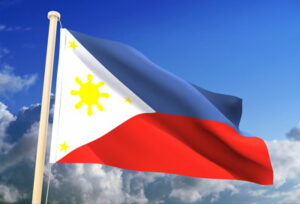 The Philippines has found itself facing stiff competition for custom in the gambling industry in recent years, with many of its neighbouring countries cashing in on the casino boom. The country’s hopes rest on a steady stream of foreign high rollers to drive up its gambling revenue – i.e. gambling tourists.
The Philippines has found itself facing stiff competition for custom in the gambling industry in recent years, with many of its neighbouring countries cashing in on the casino boom. The country’s hopes rest on a steady stream of foreign high rollers to drive up its gambling revenue – i.e. gambling tourists.
In 2018 there was a lucrative increase of 13% in the Philippines’ gross gaming revenue taking the figure to around 200 billion pesos (roughly $9.5 billion USD). This country is home to one of Asia’s fastest growing gambling markets and its integrated casino-resorts have helped to invigorate new heights of tourism revenue.
On top of this, many countries in south-east Asia maintain outright bans on gambling, which plays directly into the Philippines’ hands with regards to offering a marketable product to a wider target market.
However, in recent years there have been major investments planned in the Philippines which have ground to a halt. Landing International Development Ltd’s $1.5 billion (USD) integrated casino project in Manila has been blocked by the government, and has blocked Macao’s Galaxy Entertainment Group from building a $500 million casino resort on a holiday island.
So the Philippines’ place at the forefront of the Asian gambling industry is far from set in stone – the country faces many challenges both from internal influences such as the government and from external factors such as stiff competition for custom across Asia.
Singapore
 Similar to the Philippines, Singapore boasts a robust gaming industry with eye-watering revenues. In the first fiscal quarter of 2018, Singapore took in a total of $1.1 billion (USD) and a significant proportion of this was thanks to the tourism and gambling industries.
Similar to the Philippines, Singapore boasts a robust gaming industry with eye-watering revenues. In the first fiscal quarter of 2018, Singapore took in a total of $1.1 billion (USD) and a significant proportion of this was thanks to the tourism and gambling industries.
To be precise, the Singapore Tourist Board reported that 22% of this quarterly revenue was contributed by entertainment, sightseeing and gaming. The Tourist Board doesn’t provide a detailed breakdown of the services which are listed in each spending category, but the combined category of ‘entertainment, sightseeing and gaming’ includes (but is not limited to) entrance fees to night time entertainment and attractions, day tour purchases and spending at Singapore’s casino resorts.
In 2017 Singapore recorded ground-breaking levels of visitors, with a total of 17.4 million people visiting the country that year. Of these, 3.23 million were Chinese tourists which equates to a significant proportion of 18.5%.
There are two casino resorts in Singapore: Marina Bay Sands (operated by Las Vegas Sands) and Resorts World Sentosa (a Genting Singapore property). Marina Bay Sands alone has over 500 tables in usage – not only is this an attraction of substance to a gambler but it must also be quite a sight even to the eye of a non gambler.
Resorts World Sentosa, however, offers a different dimension of entertainment. Rather than marketing itself solely on its casino (and therefore overwhelmingly targeting gamblers as its source of revenue), the complex is also home to a Universal Studios theme park, the Maritime Experiential Museum and Marine Life Park which contains one of the largest aquariums in the world.
The first casino in Singapore only opened less than 20 years ago, meaning that its gambling industry is still young when compared to the giants of Las Vegas and other Asian markets like Macau.
What Singapore does have though is something that these two places don’t: the title of being one of the top banking capitals in the world. With high rollers coming through the gates every day, you can be sure that the highest stakes are being played every single night. A lot of casino cruises are appearing as well. They tend to sail out to international waters so as to avoid breaking any laws which prevent people from gambling on land. The Aegean Paradise Cruise for example allows patrons to gamble all day long and throughout the night.
The casino offers 40 live tables to play at as well as hundreds of slot machines, and quite interestingly the minimum bets here are a lot lower than the two casinos on land – patrons can gamble from roughly $2 a bet, offering more inclusivity and allowing players to enjoy themselves for longer.
Gambling Tourism in Europe
Let’s take a look at how Europe is affected by tourism in relation to the gambling industry and what the possible implications might be based on the data available.
Gibraltar
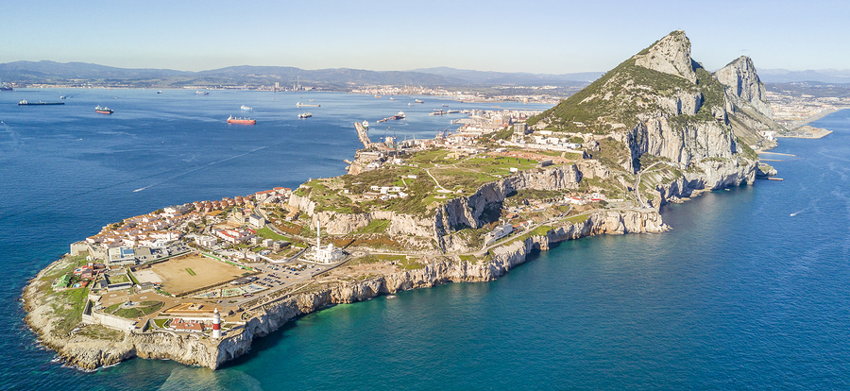
In the last 25 years or so Gibraltar has fashioned an independent and self-sufficient economy, having previously been quite dependent on the British Government’s Ministry of Defence for funding. An overwhelming element of what has allowed Gibraltar’s economy to flourish is the development of tourism to the British Overseas Territory, in particular people travelling to the area as a gambling hotspot.
The most reliable figures on tourism to Gibraltar date back to 2011, with the last extensive study on the subject being the census of 2012.
The most staggering figure is that this seemingly miniscule, with a population of only around 35,000, attracted nearly 12,000,000 visitors in the year 2011. It is estimated that around 90 per cent of these visits were day trippers from neighbouring Spain. A smaller number of visitors, mainly from the United Kingdom, stay for a few days (or more) at a time. The average length of stay by a tourist in Gibraltar was 4.1 nights in 2011.
Similarly, Gibraltar is a hotspot for British expats (who are usually retired) with 13% of the territory’s populous originally coming from the United Kingdom.
On top of this, Gibraltar has implemented a low-tax system in recent years, with the current system taking effect in 2010. This was following a 2008 ruling by the European Court of Justice which ruled that: “the Court finds that the competent Gibraltar authorities which have devised the tax reform have, from a constitutional point of view, a political and administrative status separate from that of the central government of the United Kingdom.”
This ruling essentially cemented Gibraltar’s freedom to set its own tax regulations and as such it has become very advantageous for gambling companies to be based in Gibraltar – with the government announcing in 2018 that it was reducing gambling taxes on companies annual revenue from 1% to 0.15%, a significant drop which hugely benefits casinos and gambling companies already based in Gibraltar, further enhancing their ability to attract gambling tourists to the territory.
Monte Carlo
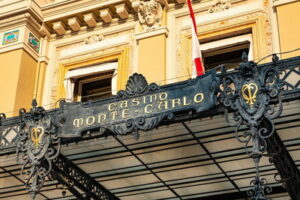 Monte Carlo is located in Monaco, which is the second-smallest country in the world by population but the most dense when it comes to population per square kilometre. The country has only 38,300 residents as 2019 figures suggest.
Monte Carlo is located in Monaco, which is the second-smallest country in the world by population but the most dense when it comes to population per square kilometre. The country has only 38,300 residents as 2019 figures suggest.
Interestingly, citizens of Monte Carlo are banned from gambling, so they cannot even set foot in one of the illustrious casinos the city has on offer. Foreigners who reside in Monaco, however, are exempt from this regulation. This means that the gambling revenue in Monte Carlo is generated exclusively by gambling tourism. Gambling accounts for 4% of Monaco’s overall revenue year on year.
Monaco is a tax haven, so it is populated by a lot of rich and famous individuals. Profits from gambling are also tax free, which will inevitably attract more gambling tourists – especially high rollers.
Not only do some of the world’s biggest names live in Monaco, from tennis ace Novak Djokovic to U2 frontman Bono and F1 driver Lewis Hamilton, but it also plays host to some of the world’s most iconic events such as Formula One’s prestigious Monaco Grand Prix alongside the Monte Carlo tennis masters. However it can be argued that this thrill-filled calendar of events was built on the cachet of Monaco’s reputation for hosting fast cars and Europe’s most exclusive gambling houses.
Lisbon
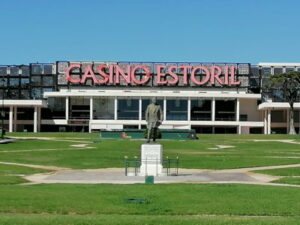 The casino industry has exploded in recent years in Portugal, with a total of ten casinos across the country now. These are all cleverly located in tourist-centric areas, in particular Lisbon. In 2018 the city played host to a total of 4.5 million tourists, and revenues gained from tourists are rising at very prosperous rates in the city.
The casino industry has exploded in recent years in Portugal, with a total of ten casinos across the country now. These are all cleverly located in tourist-centric areas, in particular Lisbon. In 2018 the city played host to a total of 4.5 million tourists, and revenues gained from tourists are rising at very prosperous rates in the city.
As Portugal’s capital city Lisbon boasts the country’s largest population by city, and accordingly brings in 45% of Portuguese GDP, making it the wealthiest region in the country.
Lisbon can be proud of a well-struck balance of casinos with a sleek and modern face, but with a history of substance. Take Casino Estoril for example – founded in 1916, this establishment is over 100 years old but has undergone numerous renovations over the last century, leaving it with a very fresh look from the outside.
In terms of history, during World War II it is rumoured that Casino Estoril was a regular meeting point for spies, dispossessed royals and wartime adventurers. It even provided inspiration for Ian Fleming’s James Bond novel Casino Royale.
The casino also has a proud auditorium, an art gallery, several restaurants and a large performance area with a stage and seating enough for hundreds of spectators. All of these components of the casino serve to attract people of varying hobbies and interests to the casino.
Sweden
 Sweden has something of a unique relationship with gambling. From 1934 to late 2018, the government had enforced a monopoly on gambling, as well as regulating the activities of gambling houses and players.
Sweden has something of a unique relationship with gambling. From 1934 to late 2018, the government had enforced a monopoly on gambling, as well as regulating the activities of gambling houses and players.
This has all changed recently, with the government opting to follow the course of other Western countries in opening up the industry to allow for private investment, and as such the Swedish Gambling Authority was established.
Sweden is going through a transformation. It is opening its door to gambling companies and saying to them that Sweden is open for business. While the Swedish Gambling Authority started granting licences on 1st January 2019, it must be stated that the floodgates don’t open overnight – after all, Rome wasn’t built in a day.
Sweden already has a large online gambling presence, with many of its citizens enjoying online casino favourites such as jackpot slots and live casino games such as roulette and blackjack. Such is the case that the Swedish population in general enjoys gambling, that the Swedish Gambling Authority reported that in 2019 there was a total revenue of €2.3 billion from land-based and online gambling operations.
This Scandinavian country really is one to watch, its population seems to have an energetic appetite for gambling and given the recent opening up of the gambling industry, we may well see Sweden develop as a hotbed for gambling tourists.
Could Canada Emerge as a Gambling Tourism Hotspot?
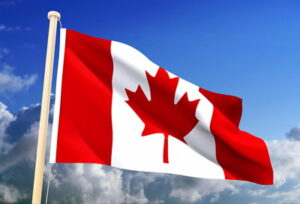 Arguably, you could say that Canada has never had a problem attracting tourists. After all, it has some of the most magnetic attractions in the world, which includes the Niagara Falls as well as a handful of the premiere ski resorts.
Arguably, you could say that Canada has never had a problem attracting tourists. After all, it has some of the most magnetic attractions in the world, which includes the Niagara Falls as well as a handful of the premiere ski resorts.
However, over the last few years, we have witnessed an uplift in online gambling in Canada, with the laws from a government level at least, being a lot more relaxed than the neighbouring USA. However, it is regions in Canada which approve online gambling licences and more often than not, Canadian players can only visit casinos which have been granted one of these licenses, with offshore online casinos illegal.
Despite this though, Canada’s general gambling industry has always enjoyed a relatively steady performance, with this being particularly beneficial in the tourism niche. Due to the legal age of gambling in Canada being 19 (18 in Alberta, Manitoba and Quebec), it means that the country attracted a vast number of young visitors from the USA (where the legal gambling age is 21).
Also, Canada plays home to a number of luxury resorts in prime locations, which also house their own casino. Casino Niagara, for example has taken advantage of the sheer beauty around it to appeal to travellers who have a particular proclivity for gambling. The impressive Casino de Montreal resort in Quebec, meanwhile attracts its fair share of French tourists.
It remains to be seen whether Canada may become a gambling hotspot for travellers, however, with in excess of 100 casinos in the country already and a number of attractive locations, there is enough to suggest that this could well happen.
Summary
Is there a connection between tourism and gambling? Very clearly there is and has been for quite a while – we all knew this, when you factor in the resort of Las Vegas, popularised by Hollywood movies. Perhaps what we were not aware of was how popular gambling tourism was in other locations around the world and also how big of a standalone industry this was on its own.
Yes, people do travel to numerous destinations around the world, purely to gamble. It is fair to suggest that the majority of these are high rollers, who enjoy the comfort of luxury resorts which have their own casino, however, there is definitely a very clear correlation that exists between tourism and gambling that isn’t just restricted to the most stereotypical places or demographics.